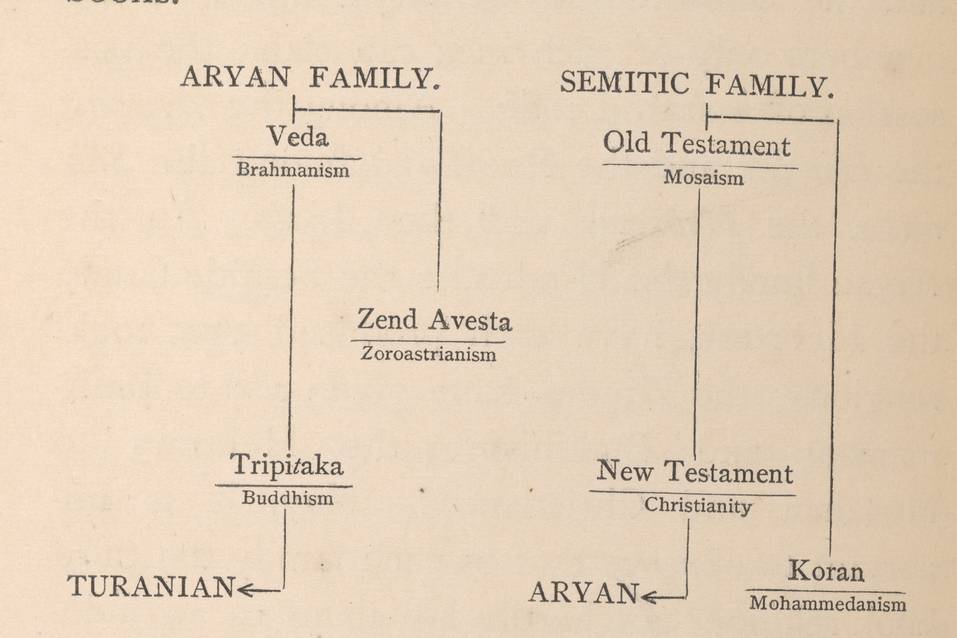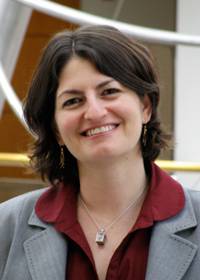
 In Stefani Engelstein’s new book, “Sibling Action: The Genealogical Structure of Modernity,” the author argues that a genealogical way of thinking about global relations emerged in the nineteenth century. This way of thinking led to several notable successes, such as evolutionary theory and the outlines of a number of language families, but it simultaneously served as the foundation for massive failures that have cast long shadows – such as race theory. Engelstein focuses on the sibling link within genealogies as a way to understand their inherent instability and provide a clue to alternative, more nuanced ways of thinking about classifications.
In Stefani Engelstein’s new book, “Sibling Action: The Genealogical Structure of Modernity,” the author argues that a genealogical way of thinking about global relations emerged in the nineteenth century. This way of thinking led to several notable successes, such as evolutionary theory and the outlines of a number of language families, but it simultaneously served as the foundation for massive failures that have cast long shadows – such as race theory. Engelstein focuses on the sibling link within genealogies as a way to understand their inherent instability and provide a clue to alternative, more nuanced ways of thinking about classifications.
Engelstein is associate professor and chair of Duke’s Germanic Languages and Literature department. Here, she speaks with Duke Today about her research.
You mention siblings and genealogy in your title: is this a book about family structure?
It is and it isn’t. I am interested in the structure of the family, particularly the role of sisters, and I write about it to some extent, but the bulk of the book is about historical systems that change over time and the fact that people started thinking of those systems in familial terms from the late 18th century on. The most obvious two are languages, which were mapped into language families, and species, which Darwin began organizing into a tree of life. But people began thinking of many historical systems in terms of common ancestry, development, and diversification. What I argue in the book is that the very idea of creating a family tree for systems makes those systems into elements of personal identity, so that knowledge-creation merged with identity-formation in ways that were misleading and sometimes very destructive.
So how does your work advance thought in this field?
The sibling was a pervasive figure the period from 1770-1915 First, I illuminate how wide-spread this single methodology was in creating fields across what are now the sciences, social sciences and humanities, and how both methods and knowledge circulated between them.
Second, rather than focusing on ancestry and the Victorian obsession with origins (which other scholars have done), I show how the horizontal part of a family tree was crucial as a foundation for various kinds of affiliations – knowledge was absolutely entangled with identity and also with hierarchy.
Things like language families and races were not abstract – you belong to one and some other people belong to the same one, and then again, many other people don’t. The most prevalent scientific theory of the early 19th century was that humans were not related at their root but that different groups – different races – had sprung up separately. Race theory overlapped with and supported hierarchical cultural theories. Europeans thought that their own language family was the best and most flexible. They claimed that members of other language families could not be creative or philosophical or political to the same degree. Christian European scholars in the 19th century spent a lot of energy trying to Aryanize Christianity – to prove an essential relation between Christianity and Indo-European language speakers rather than Judaism. In other words, genealogical research didn’t so much create a system of European identity and kinship, but rather to a large extent European ideas about their desired affinities and kinships created both the genealogical fields and the genealogies they developed.
Third, these systems were essentially unstable. If God had created languages and species, as people once believed, then there would be natural kinds. Maybe it wouldn’t always be easy to determine what those kinds were, but they were definitely there to be discovered. In historically changing systems, everything is in flux and the lines between things are fluid and contingent. But to build a classification, you need things to classify. The only way to define a thing in this new paradigm is to separate it from other, similar and closely related things. When you do that you end up not with one thing, but with two or more things simultaneously – these things are then siblings. No system therefore can exist without siblings, and yet the closeness of siblings is a destabilizing force. My major contribution is this identification of the sibling as a necessary fault line within genealogical systems, which accounts for its pervasiveness across disciplines and points towards other ways of imagining classification and identity.
So was the figure of the sibling used in many ways?
Yes. Perhaps the best known example of the significance of siblings in this period is in the rallying cry of the French Revolution, which called for liberty, equality, and fraternity. Then we have sister languages. One might think about the symbol of the abolition movement, which showed a kneeling slave under the words “Am I not a man and a brother?” The relationships of actual brothers and sisters were fantastically important to the rise of capitalism and show up in economic theories from Adam Smith to Marx and Engels. In literature and philosophy siblings appear as boundary figures or figures that upset and dispute boundaries, often in ways connected to determining cultural or racial identities and often in ways that risk incest (the merging of the similar).
What is happening to genealogical thinking now?
At the moment, the biological existence of race is disputed and the family tree is no longer thought to be sufficient for understanding the relatedness either of languages or of species – there is a big debate among biologists about replacing or augmenting the tree image. The problem with these trees is that they only acknowledge diversification (branches of a tree split, but don’t rejoin) – while the histories of development of languages and species also encompass forms of merging.
Nonetheless, genealogical thinking is still alive and well. While scientists and humanists have largely repudiated race theory, we can see all around us the ways it is still embraced and the damage it causes. Fraternity is an unstable basis for democracy that subtly encourages exclusionary practices.
What I hope to accomplish with the book is to show that genealogical systems have arbitrary elements built into them. We need to understand that and to turn to other foundations for our ethics than systems of belonging and exclusion.